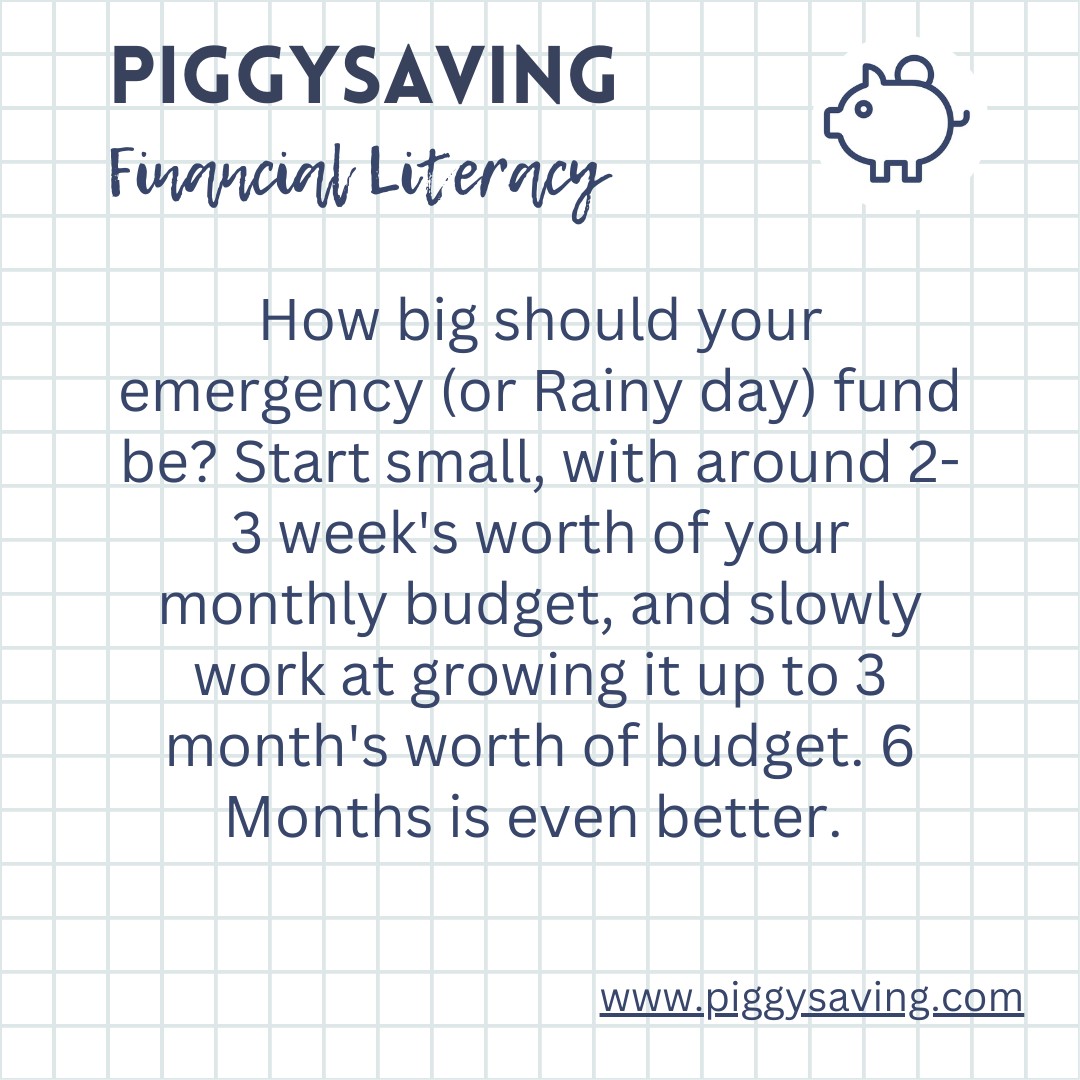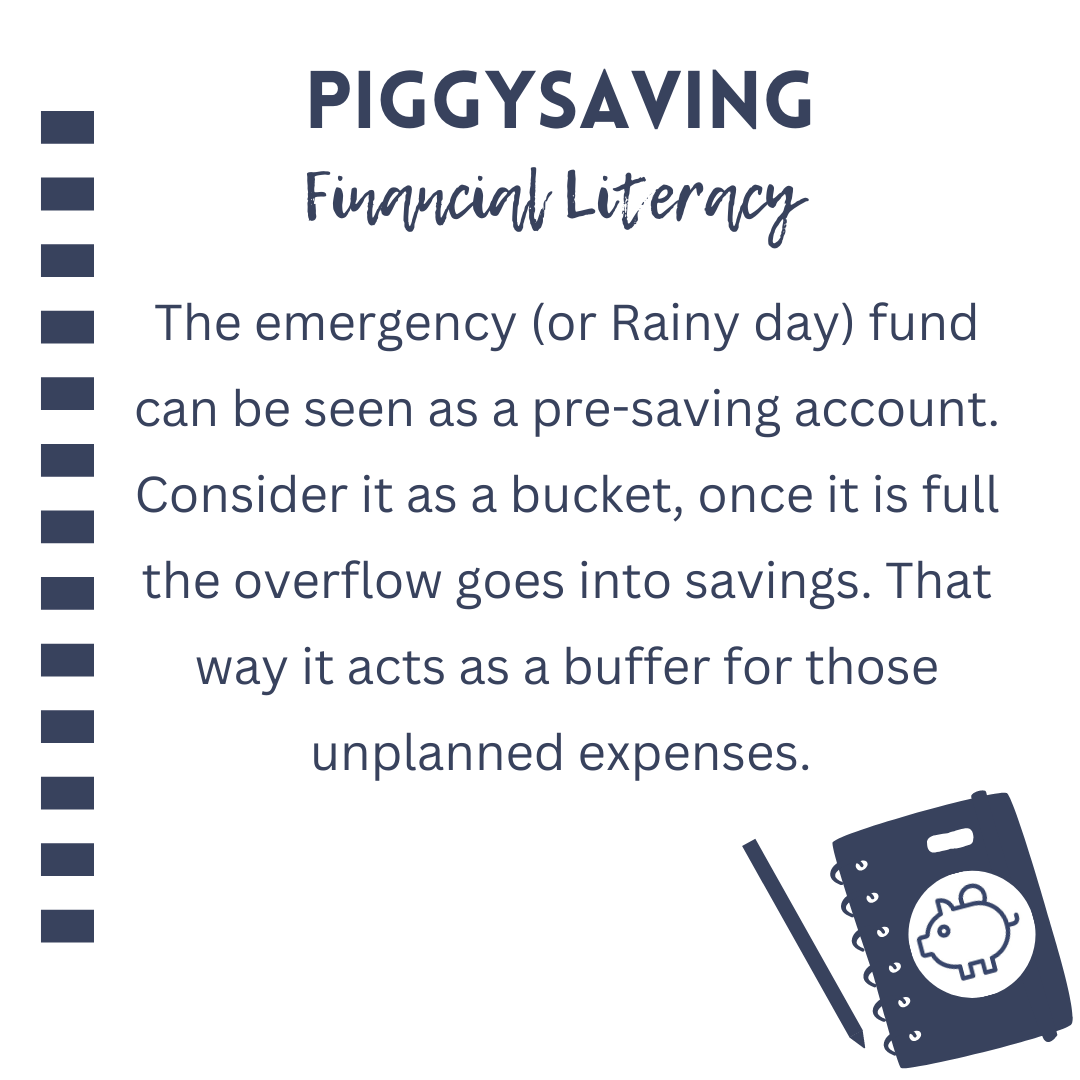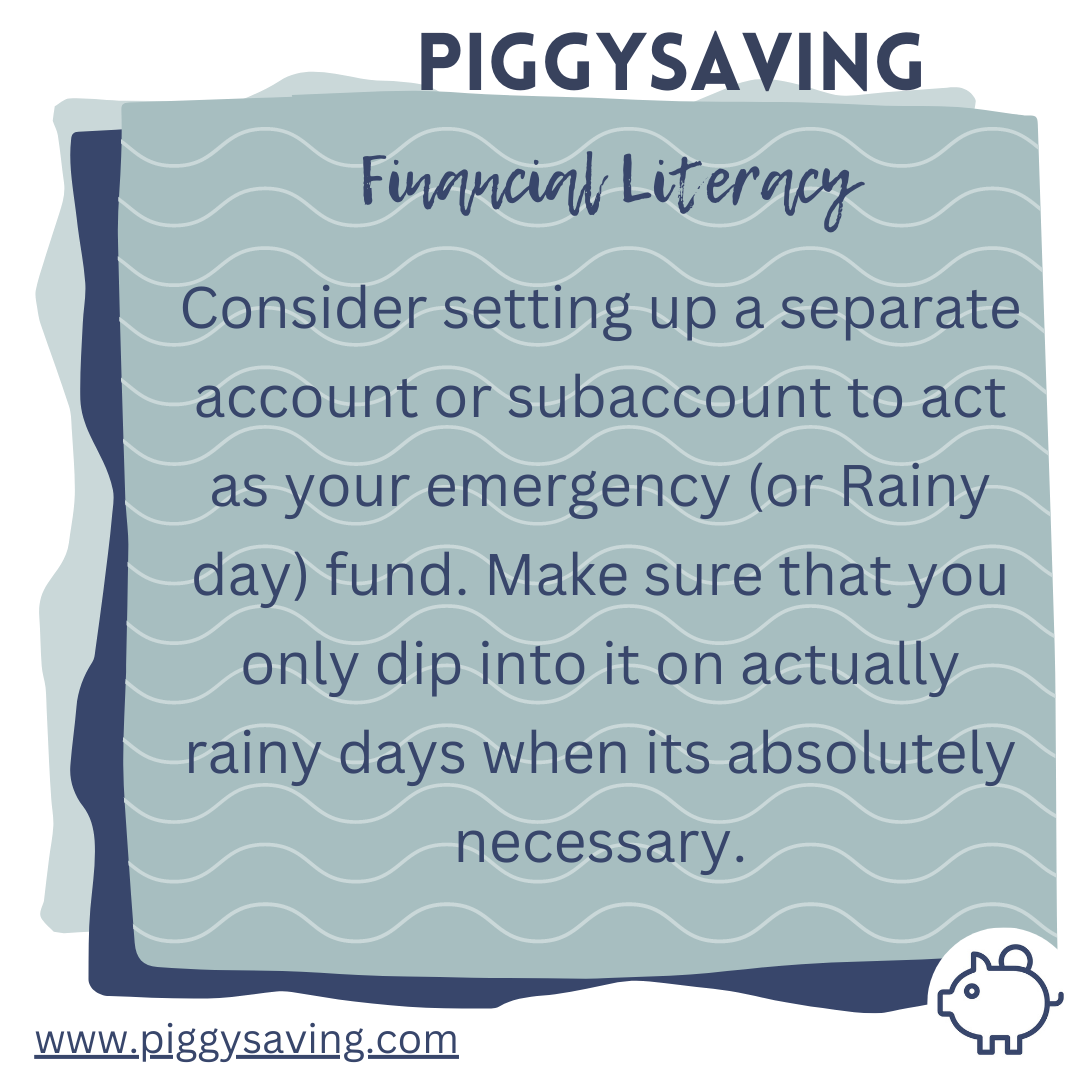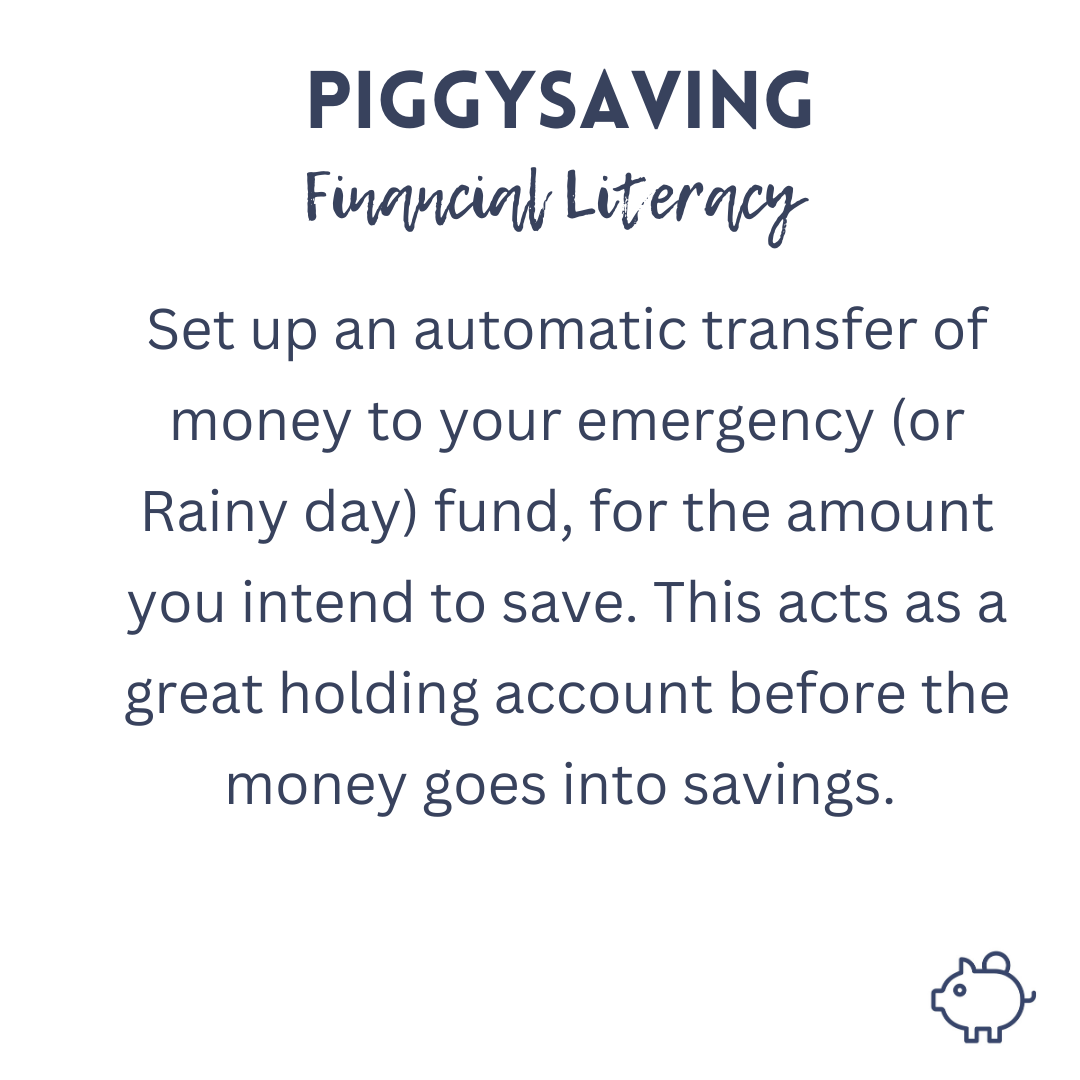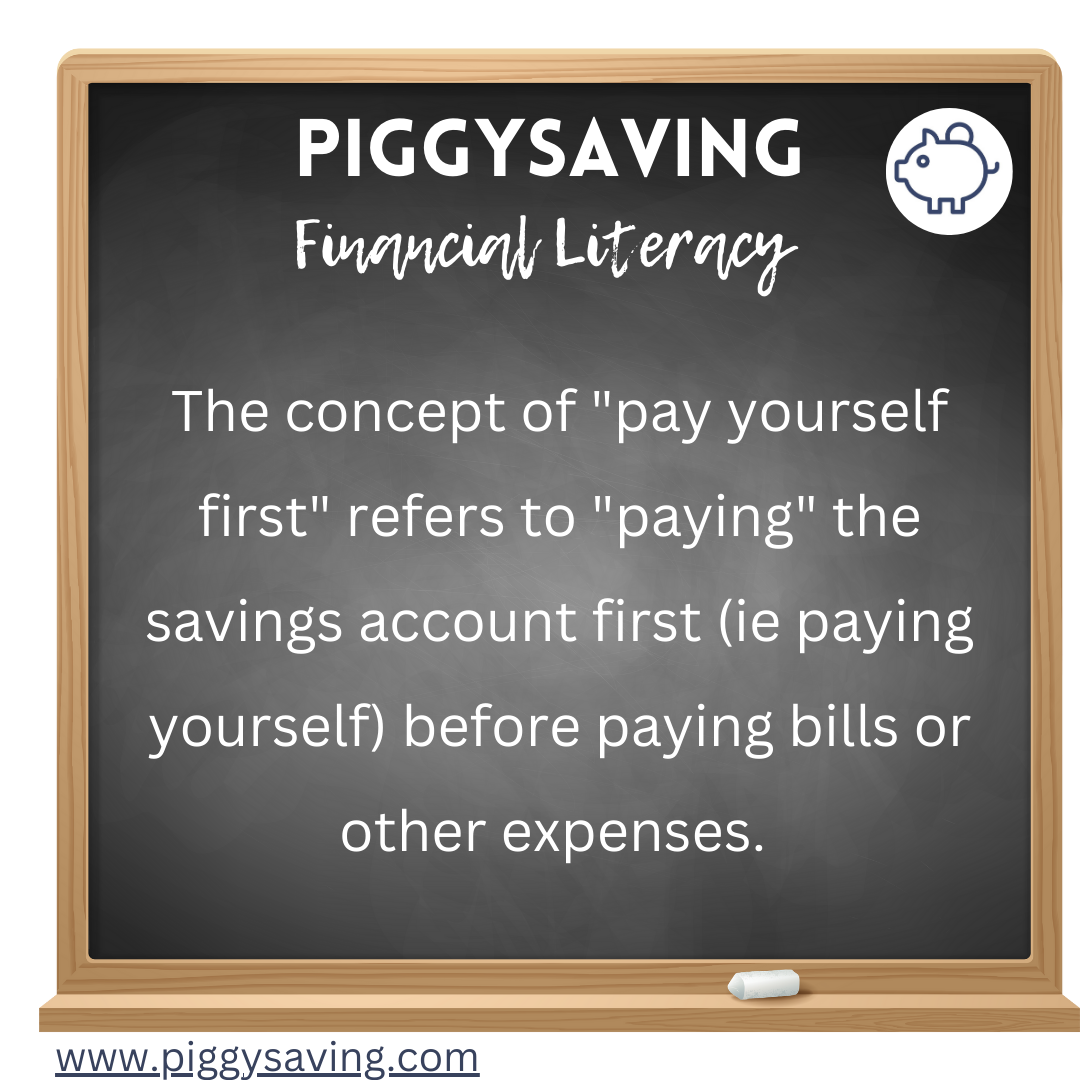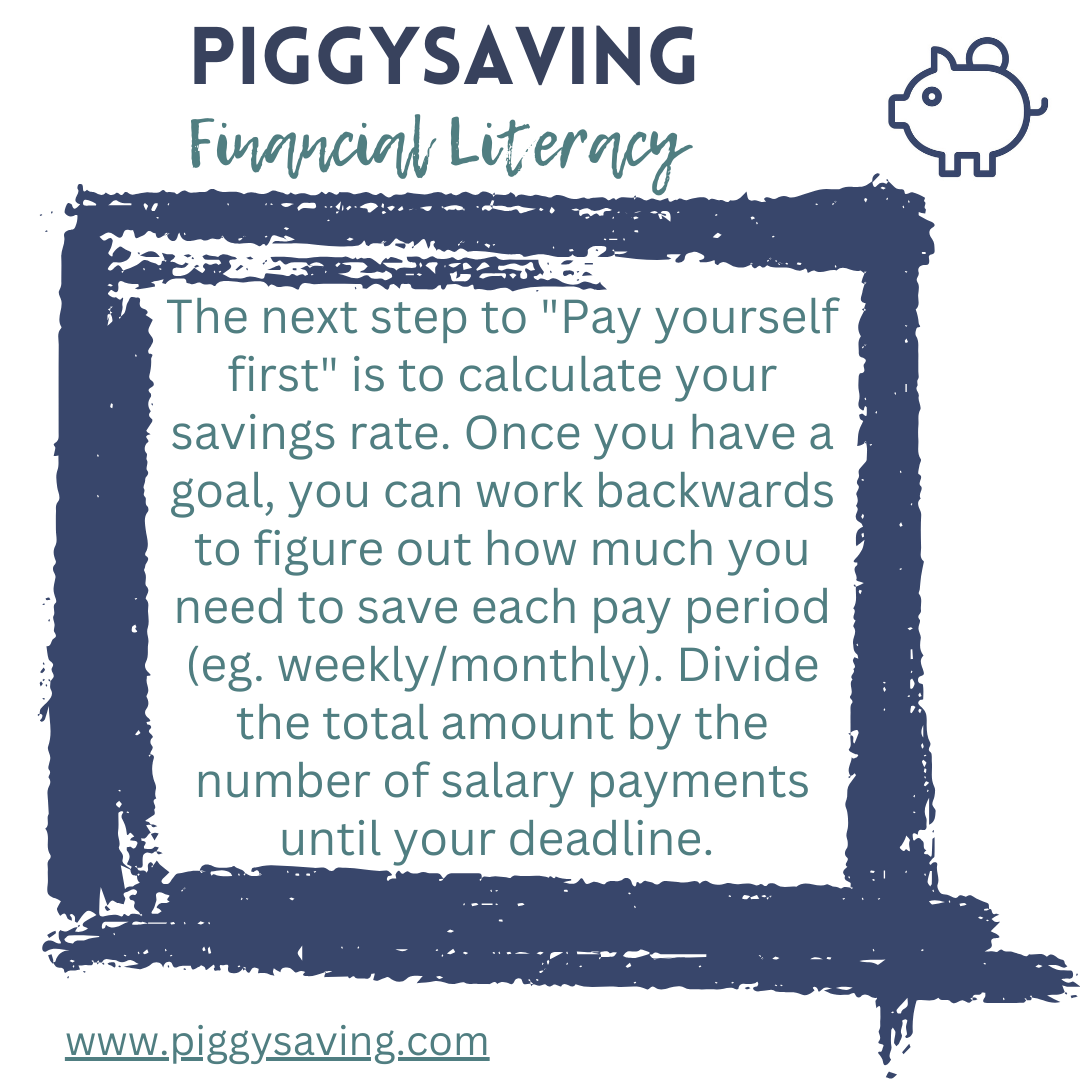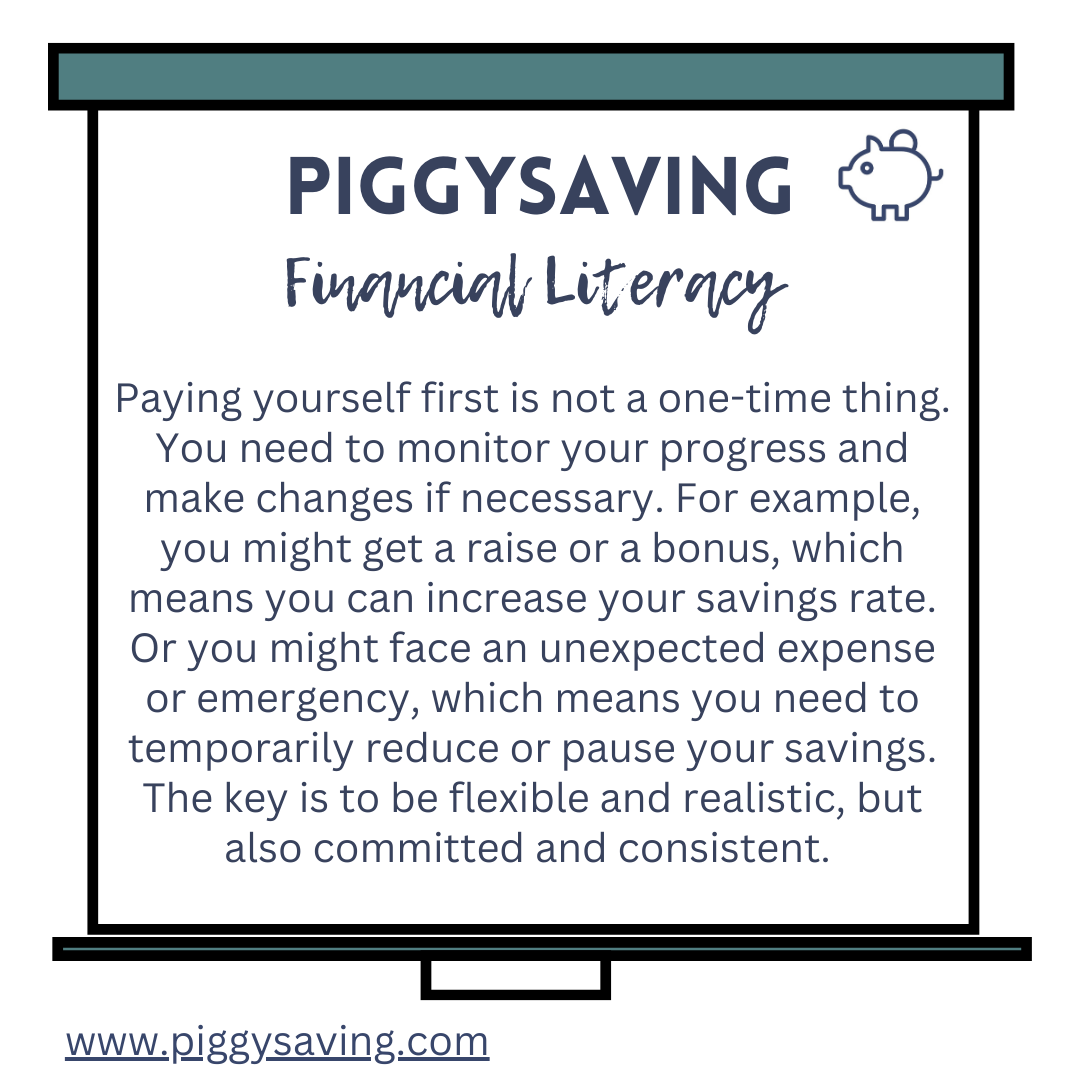Financial Literacy in bite sizes
Sept. 19, 2023
How big should your emergency (or Rainy day) fund be? Start small, with around 2-3 week's worth of your monthly budget, and slowly work at growing it up to 3 month's worth of budget. 6 Months is even better.
#financialgoals #rainydayfund
Sept. 21, 2023
The emergency (or Rainy day) fund can be seen as a pre-saving account. Consider it as a bucket, once it is full the overflow goes into savings. That way it acts as a buffer for those unplanned expenses.
#rainydayfund
Sept. 25, 2023
Consider setting up a separate account or subaccount to act as your emergency (or Rainy day) fund. Make sure that you only dip into it on actually rainy days when its absolutely necessary.
#moneymanagement #rainydayfund
Sept. 27, 2023
Set up an automatic transfer of money to your emergency (or Rainy day) fund, for the amount you intend to save. This acts as a great holding account before the money goes into savings.
#rainydayfund
Sept. 28, 2023
The concept of "pay yourself first" refers to "paying" the savings account first (ie paying yourself) before paying bills or other expenses.
#payyourselffirst
Oct. 2, 2023
In order to "Pay yourself first", you need to have a concrete goal. Saving money without a clear purpose can be demotivating and ineffective. You need to know what you are saving for, how much you need, and when you want to achieve it. For example, you might want to save £10,000 for a down payment on a house in five years.
#payyourselffirst
Oct. 5, 2023
The next step to "Pay yourself first" is to calculate your savings rate. Once you have a goal, you can work backwards to figure out how much you need to save each pay period (eg. weekly/monthly). Divide the total amount by the number of salary payments until your deadline.
#payyourselffirst #savingsgoals
Oct. 6, 2023
Pay yourself first example: if you want to save £10,000 in five years for a mortgage down payment, you need to save £10,000 / 60 months = £166.67 per month, if you are paid a monthly salary. or £10,000 / 240 weeks = £41.67 per week if paid weekly.
#payyourselffirst #savingsgoals
Oct. 10, 2023
The easiest way to 'pay yourself first' is to set up a direct debit or standing order from your current account to your savings account, once you have a calculated target saving amount. This way, you don’t have to think about it or be tempted to spend the money elsewhere. Choose a date that coincides with your payday or shortly after, so that you always have enough funds in your current account.
#payyourselffirst #savingsgoals
Oct. 11, 2023
Paying yourself first is not a one-time thing. You need to monitor your progress and make changes if necessary. For example, you might get a raise or a bonus, which means you can increase your savings rate. Or you might face an unexpected expense or emergency, which means you need to temporarily reduce or pause your savings. The key is to be flexible and realistic, but also committed and consistent.
#payyourselffirst #savingsgoals
